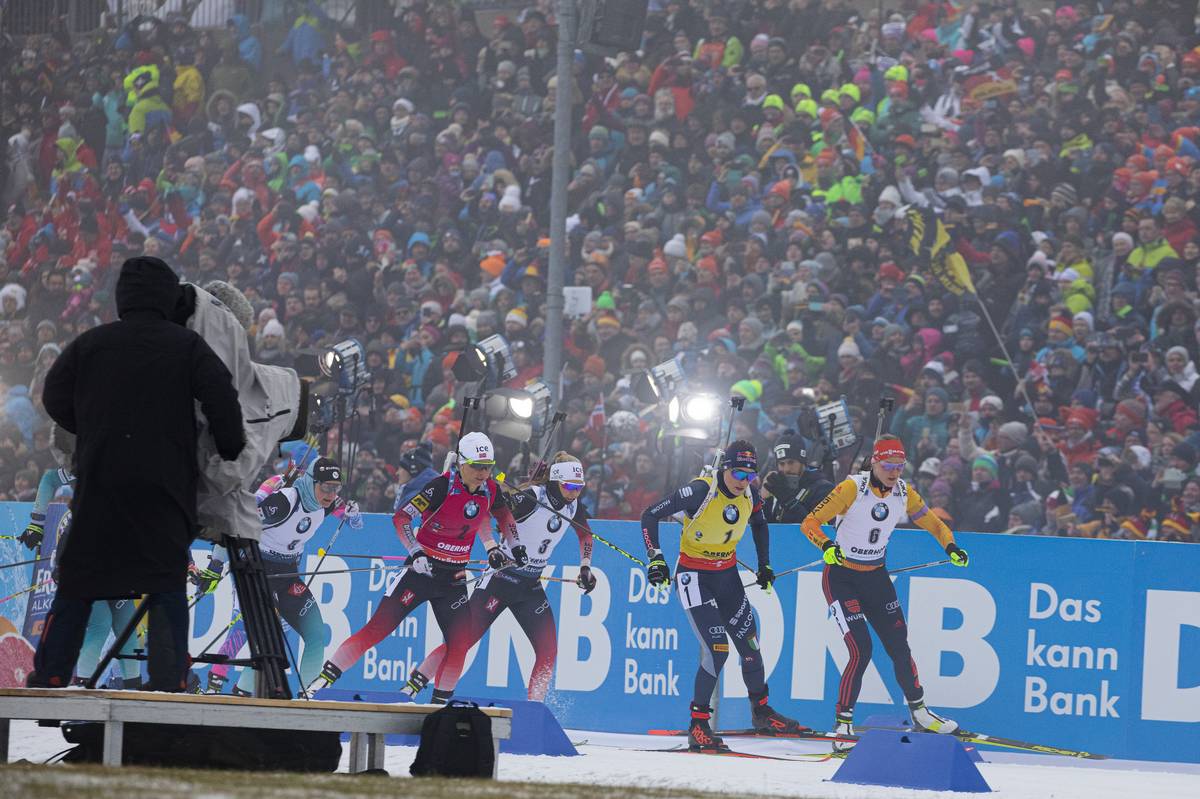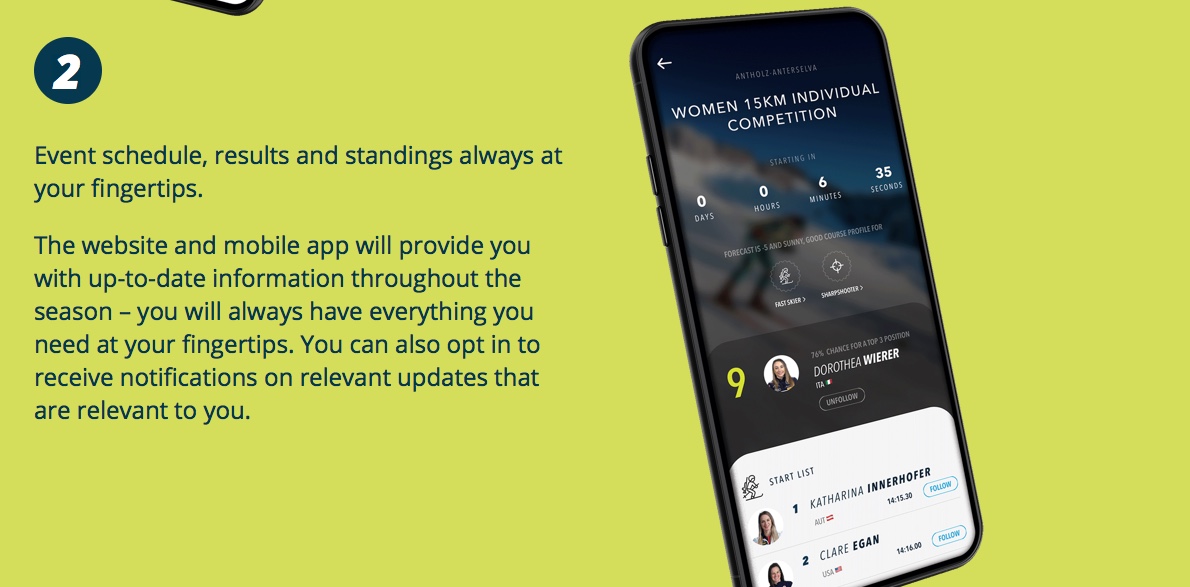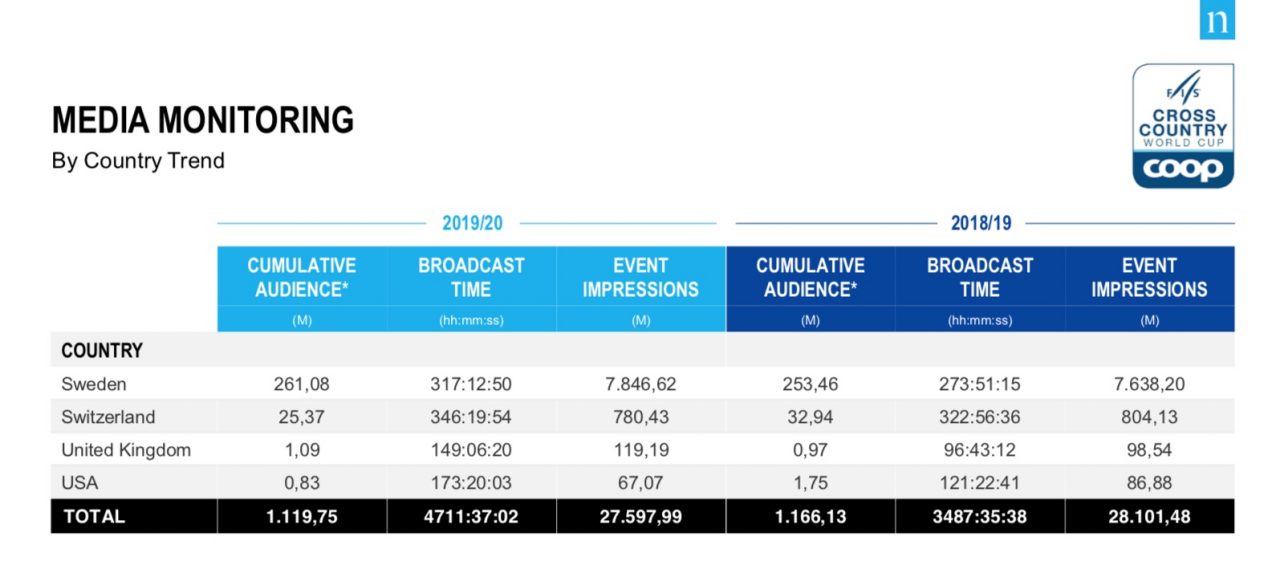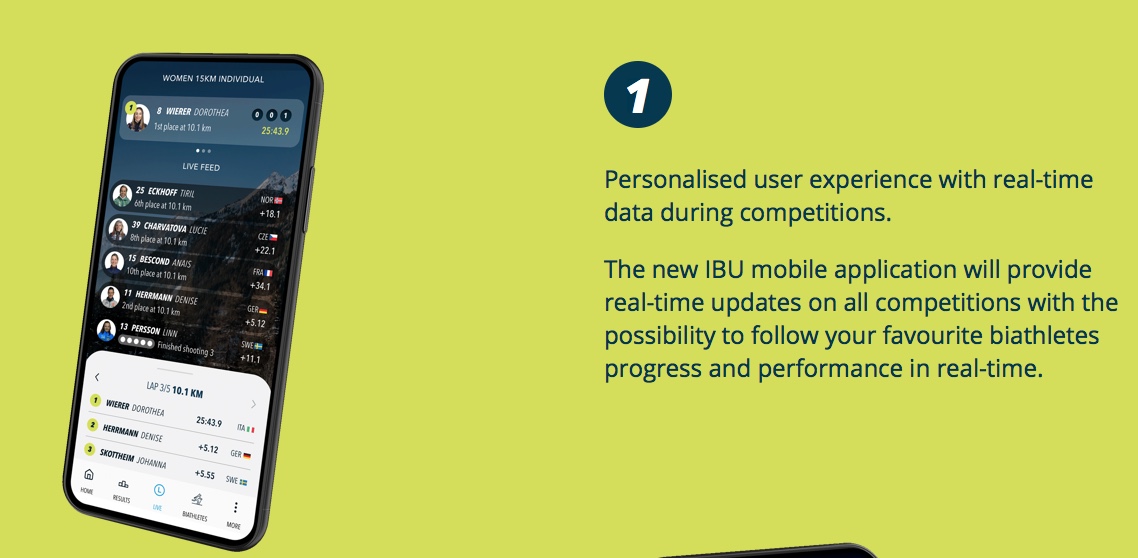The International Biathlon Union (IBU) remains committed to improving its online and mobile products according to a recent announcement. The IBU, along with the global app and web developer Vincit, claims the new products, “will allow fans to follow competitions in real-time, as well as provide a second-screen experience with user-friendly statistics and insights into competitions, personalized user experience, and top-notch content with images and video.”
More on this in a bit.
Live event streaming or on-demand replays or race highlights play a key role for entities like the International Ski Federation (FIS) and the International Biathlon Union (IBU) to retain and expand their fanbase. Unless you are attending a race, this remains the easiest way for fans to access the elite tier of the sport. It’s the gateway by which many of us become addicted to following biathlon or cross-country skiing.
Over the last decade, watching televised or streamed biathlon compared to cross-country skiing has been far easier. The IBU’s website, biathlonworld.com, once provided unblocked live and full replays of World Cup racing. With the growth of boutique cable and online subscription services, over time, watching these sports has become more restrictive. Today, the landscape in which the IBU announced the future launch of its revamped website and app, for the time being, remains a desert in North America.

This past season, watching the biathlon and cross-country live in the U.S. market required a modest subscription to NBC’s Peacock.tv (online) or a subscription to a cable provider offering the Olympic Channel, or Peacock Premium. NBC pulled live coverage of the cross-country World Cup in mid-December from the Olympic Channel, after which only a live feed with no commentary was available on the Peacock.tv website.
During the offseason, without a VPN, watching full replays, highlights, and press conferences from the IBU World Cup is simple – head to biathlonworld.com, click on live broadcasting, and you’ll be redirected to eurovisionsports.tv. The race coverage includes commentary from the stable of excellent British Eurosport commentators. You can also log into a Peacock.tv account for full race replays without commentary.
On the other hand, in the U.S. at least, the cross-country World Cup, absent commentary and featuring the basic live feed, is the available go-to for watching replays without a VPN or working YouTube for an archived race with Norweigan or Swedish commentary.
Both the IBU and FIS present digital platforms, that with some light lifting, allow fans to mine information regarding a race in real-time or parse out post-race data. The FIS digital environment provides real-time splits during races via their “live timing” platform. You can identify specific athletes to follow. Otherwise, it’s nothing elegant, but it serves basic live timing needs. FIS has upped its game in the last two years with higher production value video shorts featuring race highlights, comments from athletes, and lifestyle pieces to enhance the fan experience. The IBU has also offered a similar initiative regarding live splits, and a menu of videos offering a behind-the-scenes look at the sport. For the deep dive into real-time data, absent race video, you must head over to the IBU’s biathlonresults.com.
Both the FIS site and biathlonresults.com allow for searching an array of stats. The IBU’s stats are primarily text and numbers-based. The FIS stats are a mix of graphics, charts, and basic spreadsheets. (Here’s a link to the main FIS general stats menu.) There, you can search and analyze an individual athlete’s stats, or cross-reference up to 10 athletes and compare several categories like victories and top-10s. All this is to say, whether it’s biathlon or cross-country skiing, that it takes a bit of legwork to find useful information regarding a specific race (beyond elapsed time and time back), or an athlete.
Coming off an unsettled Covid plagued race season, who knows what the future holds for production values.
For their part, the IBU claims it is attempting to make the online/smartphone experience better for fans. Part of the IBU’s motivation is codified in what it calls Target 26 – a set of guidelines to improve biathlon’s viability by 2026. In the case of the new app, Target 26 guidelines set forth a deadline for developing a brand-specific app by 2022.
The new app being developed by Vincit provides what the IBU calls a “second screen experience”. This means fans watching a race live on one screen can use their phone – the second screen – for a more personalized user experience. In the event you’re busy and unable to watch the race live, the new IBU app will feature a more dynamic interface allowing users to view a real-time leaderboard featuring elapsed time and that ever-important metric – hits and misses on the shooting range. (Users will also be able to follow their favorite athletes in real-time.) In the case of biathlon, which often proves to be a more unpredictable sport than cross-country skiing, the app should enhance the experience for those on the go or needing that dual-screen experience while watching live.

According to our email correspondence with the IBU, they claim 80% of respondents to their fan surveys in 2020 and 2021 stated they would use an IBU app. The new app, however, will not provide access to a live stream.“The first version of the app won’t provide live video stream of events,” emailed Christian Winkler, the IBU’s Communications Director. “The provision of a live stream depends on the media rights situation in each market. The IBU and its media rights partner Eurovision Sport are currently working on a digital distribution strategy across platforms, especially for markets without a rights holder.”
Along with the real-time enhanced functionality of the proposed stand-alone IBU app, the IBU said the app will provide more detailed information and notifications regarding their competitions. The IBU plans to release an updated version of biathlonworld.com concurrent with the release of the app this fall. This is good news for those looking for more when it comes to nordic sport.
It’s safe to assume the viewing landscape in Europe is driving the IBU’s digital initiative. A February 2021 European Broadcast Union (EBU) report claimed a 7% increase in total hours viewed for the 2021 IBU World Championships. The report attributed that significant jump to increased viewing of the women’s events. The growth in biathlon viewership, in general, mirrors the findings from the most recently concluded 2021 World Championships, as far as winter sports go, biathlon remains popular with viewers. (The IBU and the EBU share an agreement for “free-to-air coverage” of the IBU World Cup – which means viewers within Europe do not need a subscription service to watch events.)

Although not a thorough analysis, FasterSkier glanced at a Nielsen report titled “COOP FIS Cross Country World Cup 2019/20 – TV Media Evaluation Event Summary“. One trend evident after the 2018-2019 season, according to the data above, is the decreased cumulative American viewing audience in 2019/2020. Despite a significant increase in total broadcast time of cross-country events in 2019/2020 within the U.S. compared to the previous year, the cumulative audience decreased markedly.
Here in North America, a daunting issue remains. While the digital environment makes access to highly produced live events and replays easier, we have had setbacks in North America. App or no app, it’s harder to watch live nordic sport without a VPN.
Jason Albert
Jason lives in Bend, Ore., and can often be seen chasing his two boys around town. He’s a self-proclaimed audio geek. That all started back in the early 1990s when he convinced a naive public radio editor he should report a story from Alaska’s, Ruth Gorge. Now, Jason’s common companion is his field-recording gear.




